China, Guowang, has filed a spectrum application with the International Telecommunication Union for two constellations with the cryptic names GW-A59 and GW-2. This will be a 12992 satellite constellation.
Chinese Aerospace conglomerate, Kasich, has large constellation satellite plans in August 2017 They announced plans for a constellation of 156 satellites with individual satellite capacities of 10 gigabits per second. Production lines for satellites were commissioned in Tianjin, aiming for an initial output of 130 satellites per year. However, the timelines slipped and no satellites were launched.In 2020, China merged the previous Hong Yun and Hong Yen projects into one Super Constellation called GWA 59, with a total of 12,992 satellites. In April 2021, China established a new company called the China Satellite Network Group, also known as China Satinine.
There is no set launch or completion date for the Chinese constellation, but Xu says that the goal is for the GW network to be deployed before Starlink’s constellation is done.
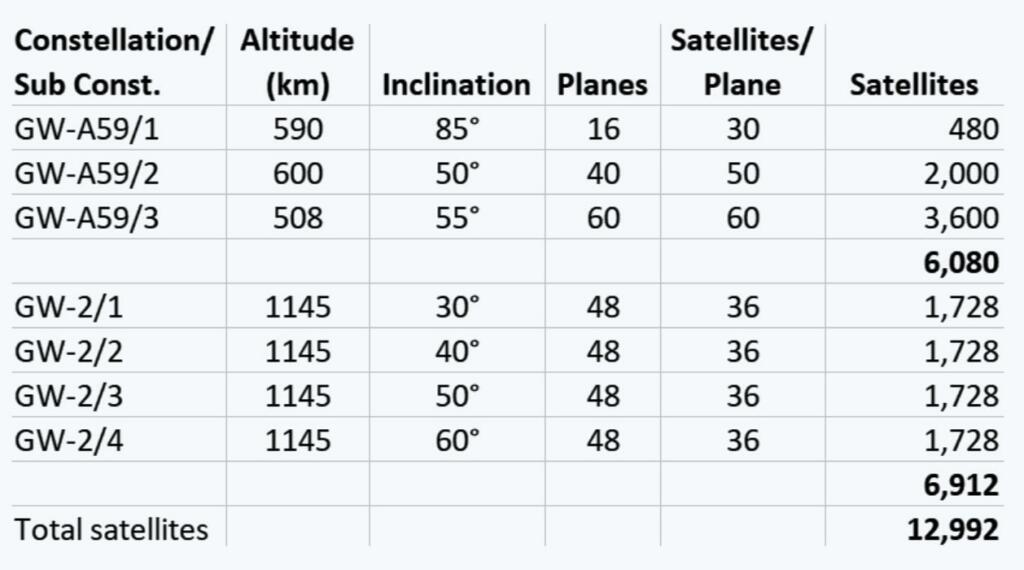
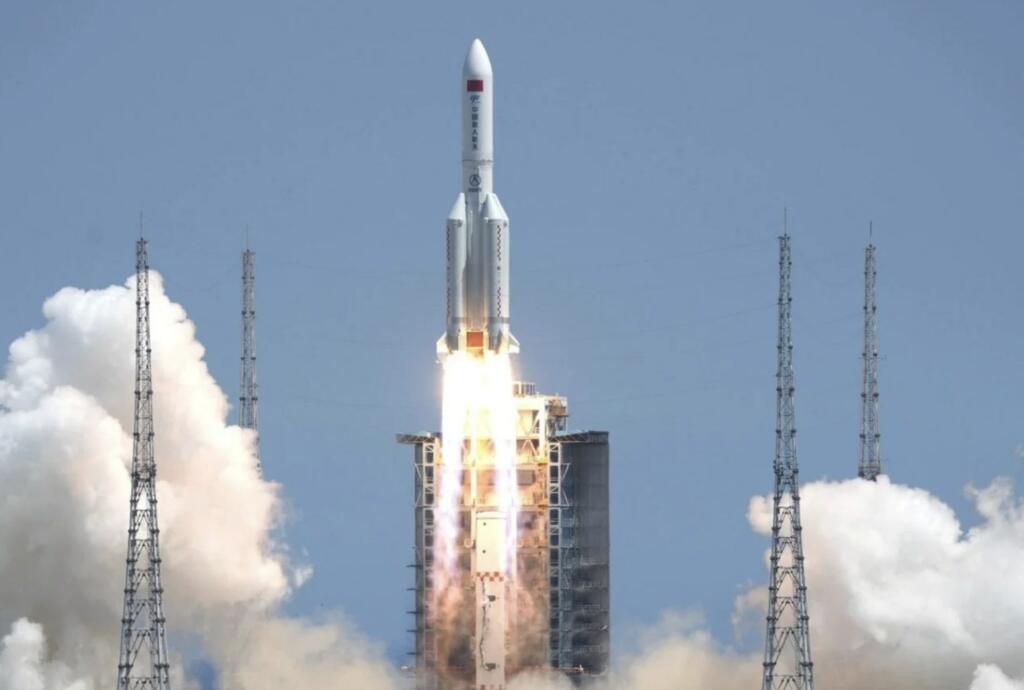
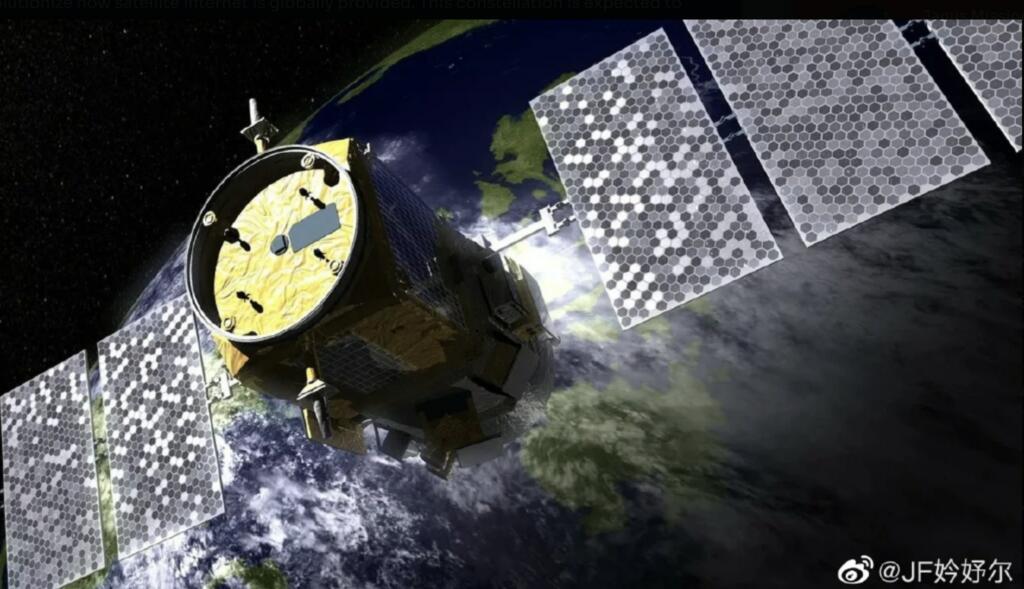
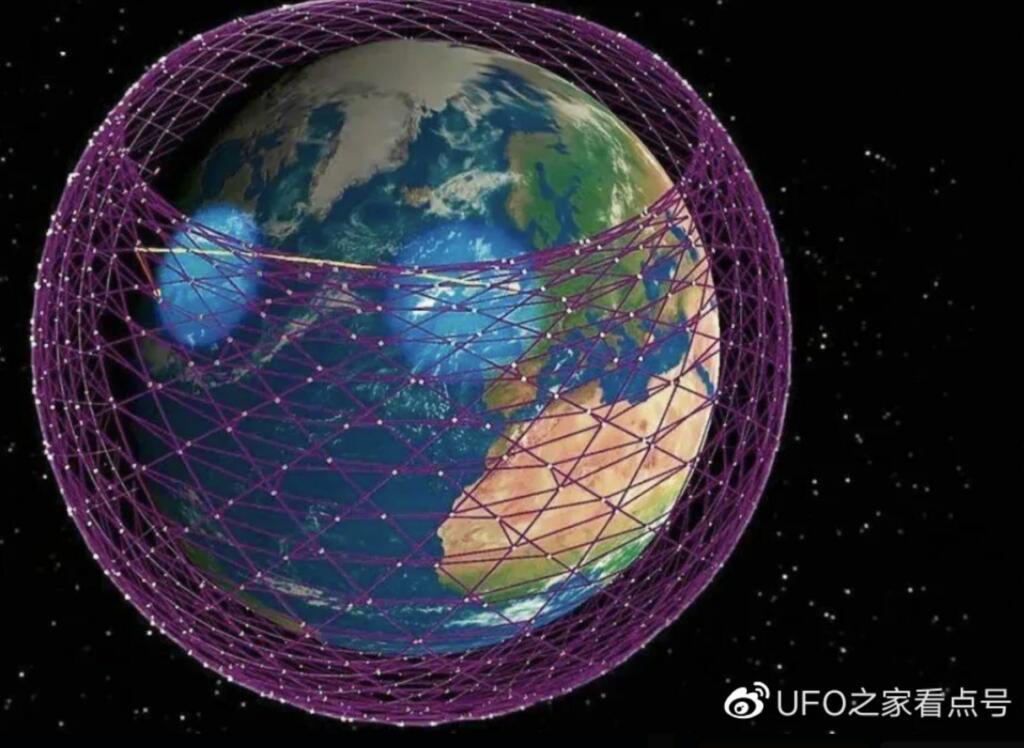
China seems to have take constellation images from Mark Handley, College of London, animations of the Starlink network.
China also has rocket startups that have aspired to make copies of the SpaceX Falcon 9 with its reusable first stage. However, China has not yet launched a rocket with a booster which could be reused.
Other Starlink Satellite Constellation Wannabees
On 5 April 2022, Amazon announced a massive set of launch contracts with three launch providers for a total of 83 launches over the next decade. The agreements are for the full constellation at buildout of 3236 satellites, and include 18 launches of the European Ariane 6, 12 launches of Blue Origin’s New Glenn (with options on 15 additional flights), and 38 launches on the Vulcan launch vehicle from United Launch Alliance. All three of these medium- or heavy-lift launch vehicles have yet to make their initial flights.
Two initial prototype satellites “KuiperSat-1” and “KuiperSat-2” were originally planned to be launched in the fourth quarter of 2022 with ABL Space Systems on their RS1 rocket. On 12 October 2022, Amazon updated this plan to be on the initial launch of ULA’s Vulcan Centaur launch vehicle in mid-2023.
The launch planned for May 4 was Cert-1, launching Astrobotic’s Peregrine lunar lander, two test satellites for Amazon’s Project Kuiper communications satellite system, and cremated remains in 150 capsules that will be sent into deep space for Celestis.
Blue Orogin had a BE-$ rocket engine explode during testing.
One Web has most of its satellites launched.
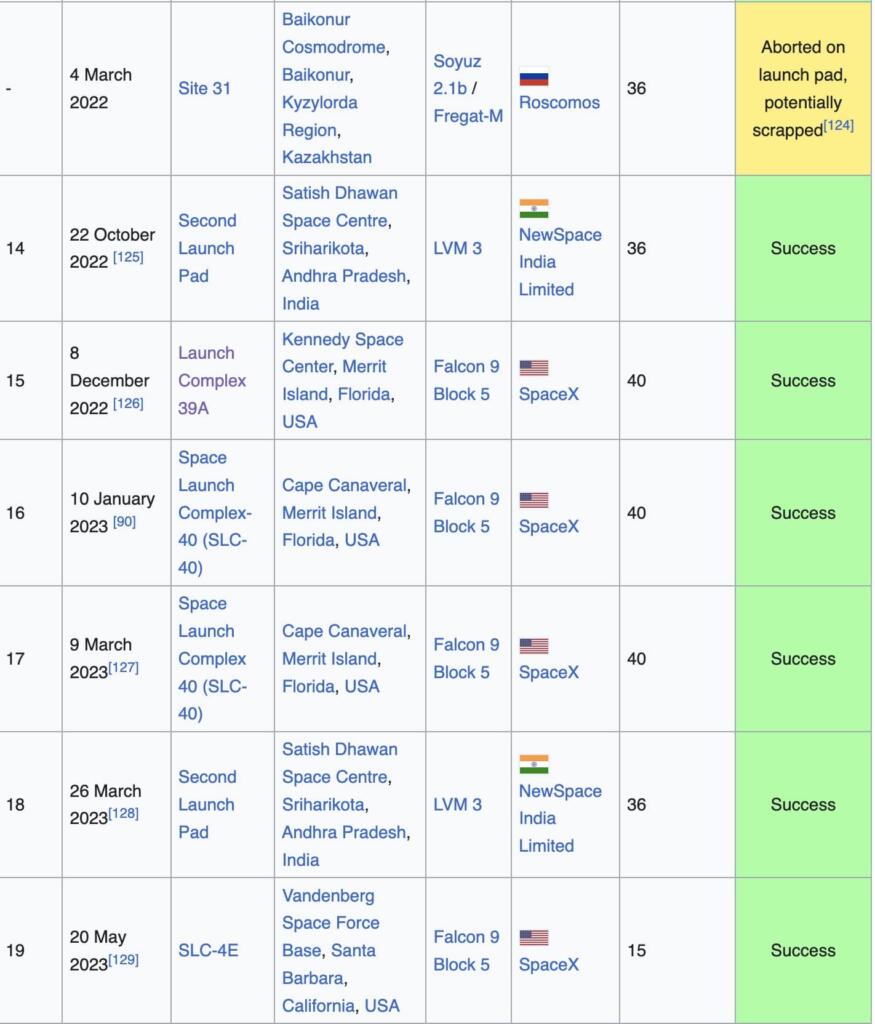
SpaceX and India’s New Space have taken over launching Oneweb satellites after the start of the Russian Ukraine war.

Brian Wang is a Futurist Thought Leader and a popular Science blogger with 1 million readers per month. His blog Nextbigfuture.com is ranked #1 Science News Blog. It covers many disruptive technology and trends including Space, Robotics, Artificial Intelligence, Medicine, Anti-aging Biotechnology, and Nanotechnology.
Known for identifying cutting edge technologies, he is currently a Co-Founder of a startup and fundraiser for high potential early-stage companies. He is the Head of Research for Allocations for deep technology investments and an Angel Investor at Space Angels.
A frequent speaker at corporations, he has been a TEDx speaker, a Singularity University speaker and guest at numerous interviews for radio and podcasts. He is open to public speaking and advising engagements.


Forget copying Elon…do Sea Dragon, China!
Kind of scary to see business proposals relying on error prone great circle distance estimations at high latitudes instead of geodesic distance or better yet actual fiber paths.
Who are the clients for Chinese space based internet access? Pakistan and who else?
This seems DOA.
Africa and South America (poor terrestrial infrastructure), possibly Indonesia/Malaysia and the Philippines (island archipelagos).
But the anchor customer will be the People’s Liberation Army.